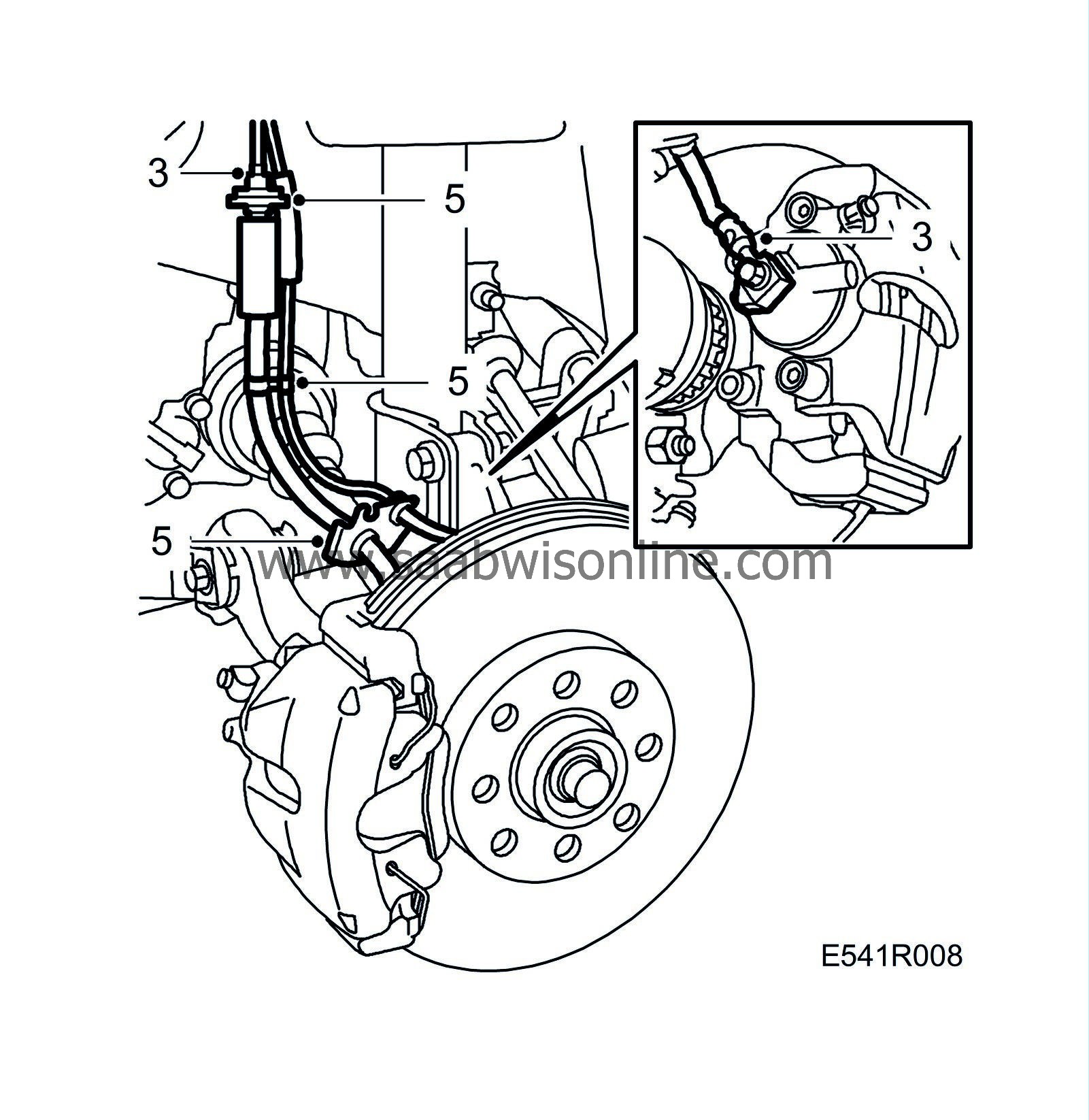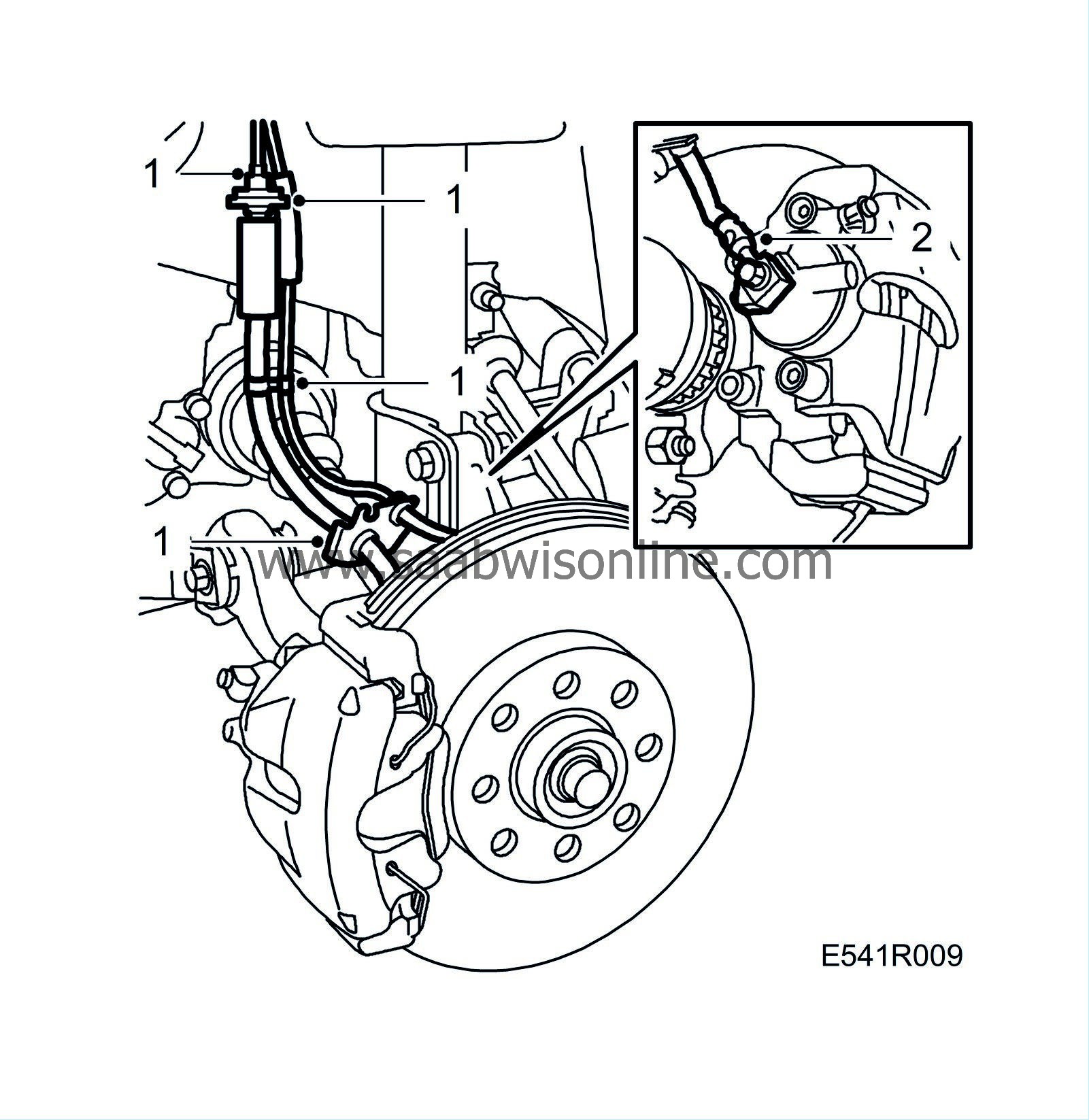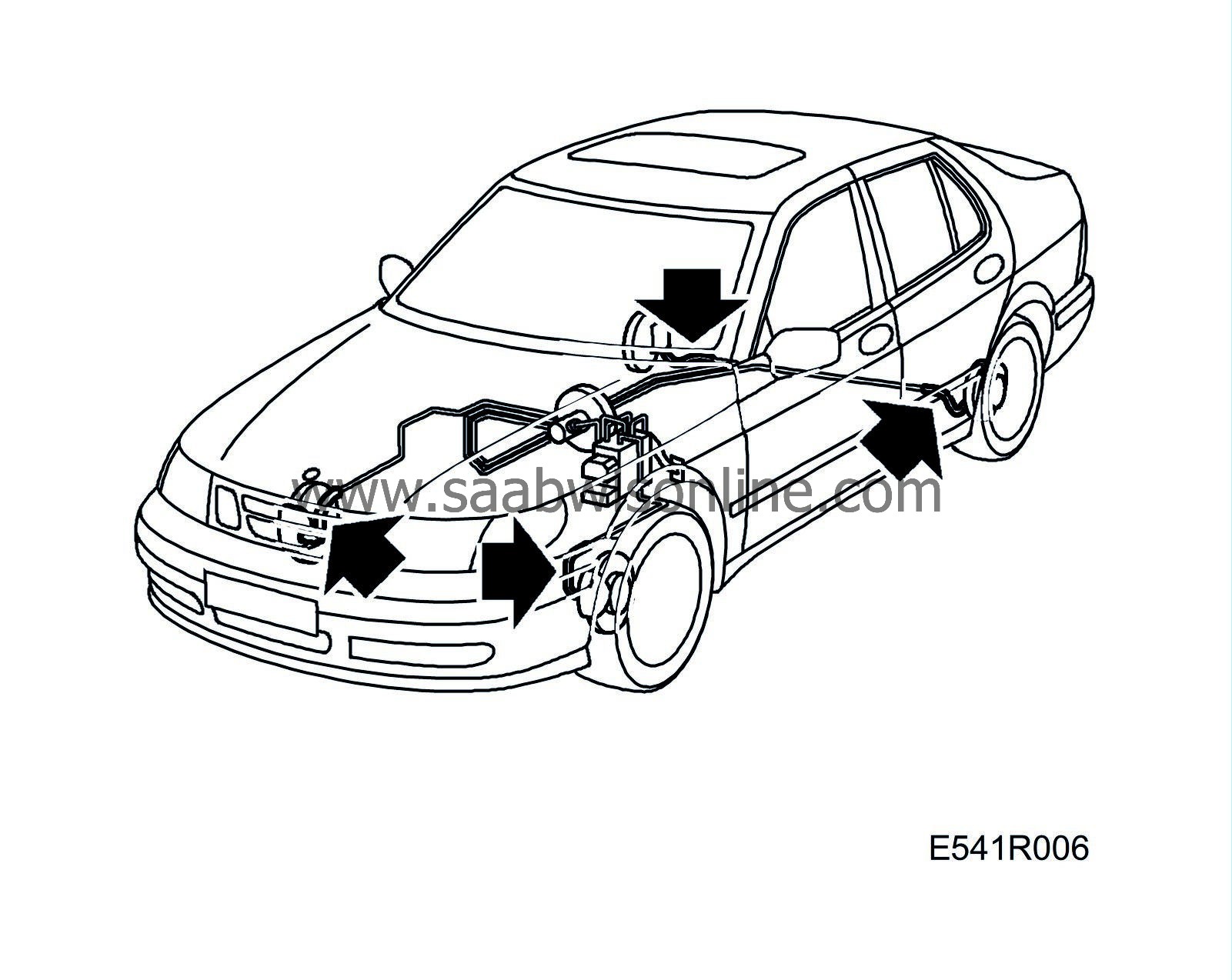PRE-RELEASE
Brake hoses
| Brake hoses |
| To remove |
| Note | ||
|
The following procedure applies to changing the brake hose on a front wheel. The same principle can be applied to hoses on the rear wheels as well. |
| 1. |
Depress the brake pedal slightly using a brake pedal clamp.
Remove fuse No. 1 for the brake lights. |
|
| 2. |
Raise the car and remove the wheels on the side where the hose is to be changed.

|
|
| 3. |
Undo the connection at the brake caliper and the connection between the brake line and brake hose.
|
|
| 4. |
Plug the brake line.
|
|
| 5. |
Release the clip and remove the hose.
|
|
| To fit |

|
||||||||||
| 1. |
Connect the new brake hose to the brake line and fit the clip.
|
|
| 2. |
Connect the hose to the brake caliper, using a torque wrench. Make sure that the hose is turned by the correct amount.
Tightening torque 45 Nm (33 lbf ft) |
|
| 3. |
Bleed the system, see
Bleeding the brake system
.
|
|
| 4. |
Fit the wheel, see
Wheels
Tightening torques aluminium wheel 110 Nm (81 lbf ft) steel wheel 50 Nm +2x90°, max. 110 Nm (37 lbf ft +2x90°, max. 81 lbf ft) |
|
| 5. |
Check the brake hose connections for leakage.
|
|
| 6. |
Lower the car.
|
|


 Warning
Warning

